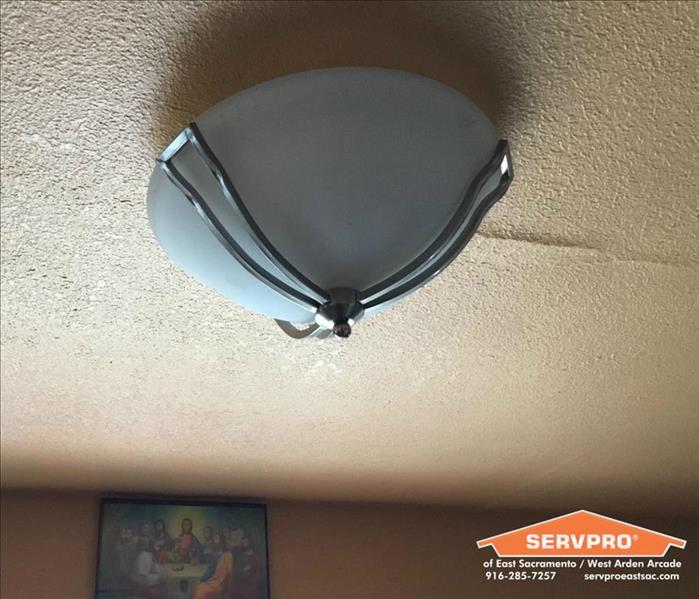Water Damage Signs at Home
12/5/2018 (Permalink)
 In this photo, the minimal bubbling around the ceiling revealed a much bigger problem that we found in the attic.
In this photo, the minimal bubbling around the ceiling revealed a much bigger problem that we found in the attic.
Whether you are looking at a new home to buy or rent or are inspecting your own home, it is important to know the signs of water damage or potential water damage. Whether from a flood, fire, or leak, water damage can cause structural problems and lead to the presence of mold which can present a health risk to the occupants of the home.
What to look for
Learning the tell tale signs of water damage is an important part of homeownership so that you can identify any existing problems and be prepared to spot it in the future. Water damage can develop as changes in colors, textures, and even smells in the interior and exterior of your home. For instance, ceiling water damage is usually easier to spot than water damage in a basement because you will see stains and discoloration on a ceiling, but may not know that a musty odor can be a sign that there is a problem on the lower level of your home.
- Water Accumulation: The most obvious sign that you have water damage on your hands is areas of standing or pooling water. These can result from old or malfunctioning appliances including washers, water heaters and toilets. A puddle could also occur from a leaking roof, or from drainage pipes if the water is on the outside of your home.
- Discoloration: With water damage in your ceiling and attic, look for water spots and stains. The area can appear wet or dry and usually is a yellow, brown, or copper color in a ring. Walls may have bubbling, cracking, or peeling paint and wallpaper in addition to staining.
- Changes in texture: While you may see a lot of discoloration in walls and ceilings, the main sign of water damage in flooring is the changes in texture. This is a result of water seeping between the floorboards and pooling underneath them while the material soaks up as much water as possible. Some changes in texture include:
- Buckling: You may notice soft spots in hardwood floors due to rotten wood, which feels spongy compared to normal wood. Water can seep into subflooring of all types of flooring material and cause sagging.
- Sagging/Sinking: You may notice soft spots in hardwood floors due to rotten wood, which feels spongy compared to normal wood. Water can seep into subflooring of all types of flooring material and cause sagging.
- Cupping: Cupping occurs when water is absorbed from the sides and bottom of the wood. This normally happens when water pools underneath the wood during a water loss. The edges will slightly raise or “cup.” Cupping can often be sanded out.
- Crowning: Crowning occurs when the top of the wood holds more moisture than the sides and the bottom of the wood. This makes the wood arch or create a bowed shape in the middle. Most of the time you cannot sand out crowned flooring.
- Odor: Trust your sense of smell. If you smell mustiness or mildew, it's likely there was water damage and now there may be a potential mold issue. The smell may come from basements, walls, and other areas where water damage has been accumulating for some time. Trust your sense of smell. If you smell mustiness or mildew, it's likely there was water damage and now there may be a potential mold issue.
What to do if you find Water Damage
If your home has water damage or even if you suspect that you may have a problem, give SERVPRO of East Sacramento / West Arden-Arcade a call. First, if you can, locate the problem area. Next, take any necessary steps to prevent any further damage. You may need to soak up standing water on the floor with towels or shut off your home's water supply.
Then, call your home insurance company to report the damage and contact a licensed professional to begin the cleanup process. We will work with your insurance company to help you determine your next steps.




 24/7 Emergency Service
24/7 Emergency Service